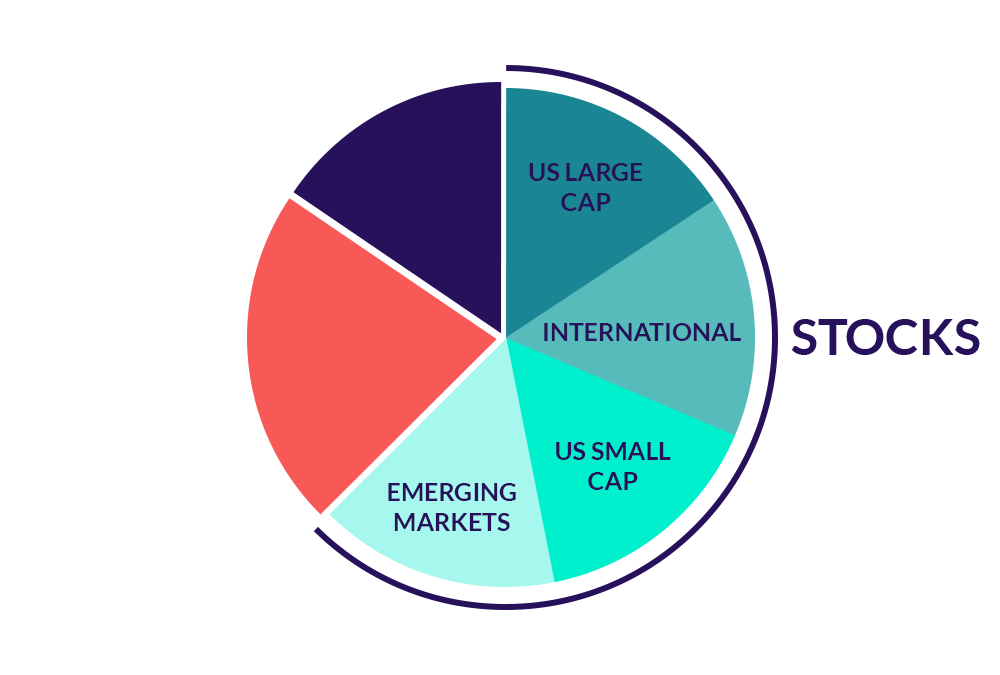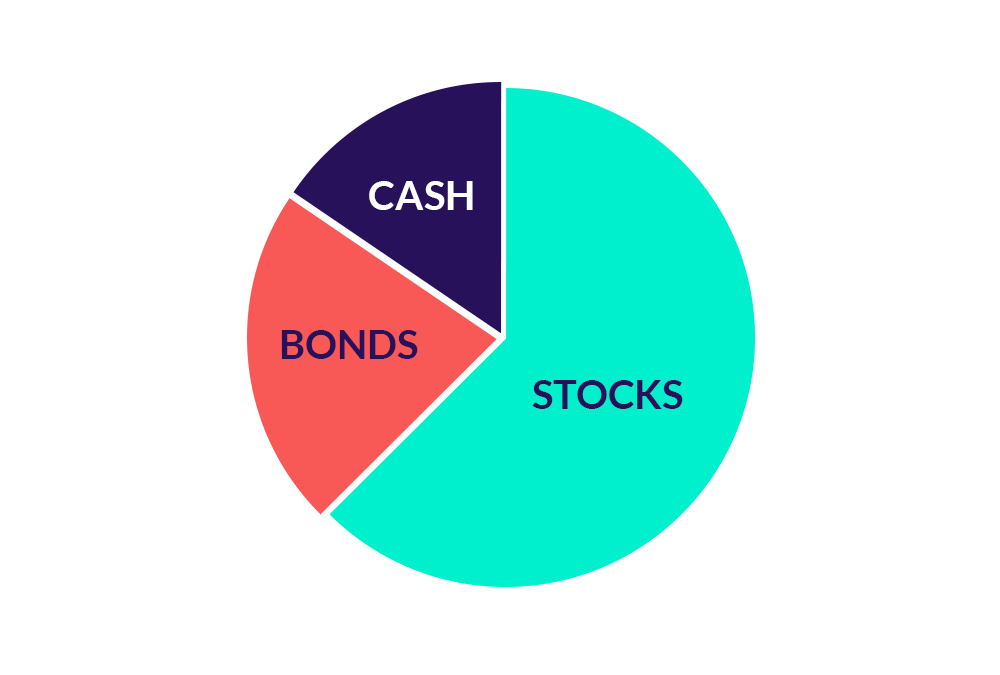Investing | Article
“Don’t Put All Your Eggs in One Basket”: Why Diversification Matters
by Cherry | 21 Sep 2022 | 9 mins read

This article is brought to you by ProsperUs
Diversification is often cited as one of the key strategies to successful investing. It involves spreading your money across a number of investments instead of putting all of it in one stock or investment vehicle. The idea is to mitigate the risk that you’ll lose all or a significant portion of your money in a single investment.
This is best illustrated by the “eggs in the basket” metaphor. If you put all your eggs in one basket and you drop that basket, all the eggs will break. But if you place some eggs in Basket A, some in Basket B, and a few in Basket C, you’ll still have eggs in Basket B and C should you drop Basket A and break all the eggs in it.
The baskets represent different investment vehicles, all of which have their own set of risks, and they react differently in any given economic and market condition. Hence, by putting our money – the eggs – in different investments, we’re spreading these risks across multiple investments.
There are various ways you can diversify your investments – across different companies, sectors and even countries – and we’ll cover them here. But before we do, it’s important understand the kinds of risks that can be reduced through diversification.
Related
Risks you can diversify, risks you can’t
When investing, there is always a risk that something may go wrong and cause your investment’s value to go south. These risks are broadly categorised into systematic and unsystematic risks.
Unsystematic risks are business and financial risks specific to a company or industry. This type of risk is also known as “diversifiable risk” can be effectively reduced through diversification.
Here’s an example of unsystematic risk. Say you’re thinking of investing in a chicken rice stall. The stall is exposed to the risk of rising raw chicken prices, which can cause the stall’s operating expenses to increase, thereby squeezing its profits.
The good news is the risk of rising raw chicken prices can be diversified by investing in other types of businesses such as a coffee stall, or an ice cream shop, that aren’t affected by rising raw chicken prices.
By diversifying your portfolio, you can reduce the adverse impact of a single business or industry’s risk factors on your portfolio.
Systematic risks affect every company and are not specific to a particular company or industry. The causes of systematic risks are interest rate movements, inflation, exchange rates and political instability that have a broader impact on assets and the economy.
In this case, companies would be affected no matter what industry they’re in.
And while it isn’t impossible to mitigate systematic risk through diversification, it is still difficult because it’s harder to predict the impact of systematic risk. One way you can hedge against it is by investing in different asset classes, markets, and countries.
Ways to diversify your investments

Diversifying your portfolio just means owning a variety of assets with different risk profiles. For simplicity, we group diversification strategies into two categories; diversification within asset classes and diversification across asset classes.
Diversifying within an asset class
When you diversify within an asset class, you invest within a type of asset. For instance, a stock is a type of asset and rather than buying just one company’s stock, you’d buy stock in multiple companies that range in their sizes, sectors and markets.

The following are a few ways to diversify within an asset class.
Stocks:
- Company diversification: You buy stocks of multiple companies to protect your portfolio from significant losses if one company goes bankrupt.
- Industry diversification: Generally, stocks are grouped into 11 to 12 industries. Owning stocks from a few industries protects your investments from events that affect a particular industry. (e.g. construction, property, technology, energy, healthcare, consumer staples).
- Size diversification: Investing in companies of different sizes or market caps, such as small-cap, mid-cap, and large-cap companies. Small-cap companies could have high growth potential but tend to be riskier than mid-to-large cap companies. Conversely, large cap companies tend to be established companies with less room for growth but are considered more stable.
- Global diversification: Investing in a mix of domestic and international stocks. This helps you reduce the risk that your portfolio is impacted by the economic and political climate in one particular country.
Bond:
- Invest in bonds with different maturities: Based on the time horizon of your investment, you would invest in bonds of different maturities. If you need your money immediately, you may invest in a 1-year bond, but if you don’t plan to use the money anytime soon, you may invest in a 5-year, 10-year, or 20-year bond.
- Invest in bonds by different issuers (government and corporations): As with stocks, diversifying across different companies, or governments, in your bond portfolio prevents you from suffering large losses should one of the companies or countries default on their bonds.
Diversifying across different asset classes
When you diversify across asset classes, you distribute your investments across multiple types of assets. For example, rather than investing in only stocks, you also invest in bonds and real estate. Different asset classes have varying levels of risk and returns, so including investments across asset classes will help you create a diversified portfolio.

There are several general asset classes in investment portfolios:
Stocks (or equities) offer the highest potential reward but are relatively more volatile and risky.
Bonds (or fixed income) tend to be less risky (than stocks) but their returns also tend to be lower. Having bonds in your portfolio can mitigate stock market risks as bonds generally have an inverse relationship with stocks.
Cash in money market funds or savings accounts have the lowest risk and return compared to stocks and bonds.
REITs are diversified property investment funds, and they are good for hedging against inflation because of their strong long-term capital appreciation potential. Investing in REITs is a way to diversify your portfolio outside of stocks and bonds. It is also a good alternative to investing in physical properties because they are more affordable. You can consider REITs as fractional investing in a pool of properties. Generally, REITs are organised by type of properties (eg; Office REITs, Retail REITs, Healthcare REITs and Residential REITs)
Commodities have a low correlation to stocks and bonds and are a good hedge against rising inflation. They are good diversifiers for stock and bond portfolios. Generally, commodities are grouped into four broad categories: metal, energy, livestock and meat, and agricultural
You can add commodities to your diversification by investing in: –
- Physical commodities
- ETFs of physical commodities
- Stocks of commodities producers
- ETFs of commodities producers
Funds are investment vehicles where investors’ money is pooled and managed by a fund manager. Funds are typically made up of more than one asset or company. In and of themselves, funds are not necessarily an asset class on its own. Some funds, such as a stock market fund, are made up of only one asset class like stocks; other
Related
Diversification and your investment returns
Diversification sounds like a safe path to reduce risk. The obvious question most people would ask is, will diversification reduce my returns? The answer is; Yes and no.
If you invest in only one stock and the price jumps by leaps and bounds, you will reap the maximum profit from this one investment. If you diversify and invest in nine other stocks that may not do equally well, you will lose out on the huge profit from that one outperforming stock.
But what if that one stock goes south, a diversified portfolio can save you from losing all your capital. In investing, it’s more important not to lose all your money than to maximise your profits. When it comes to building long-term wealth, diversification is a more reliable strategy.
Content sponsored by ProsperUs
“Put your eggs in different baskets” is the investing equivalent of diversifying your portfolio and spreading out the risk of your investments. With the comprehensive ProsperUs platform, you’ll have instant access to a wide range of asset classes, including Mutual Funds, Stocks, CFDs, Options, and more for you to explore.
Sign up with the promocode ‘TSSXPU’ to enjoy a welcome promotion of up to S$590. Not sure where to start? Click on the link to browse all of the ProsperUs campaigns and promotions so that you can stack and enjoy!
ProsperUs is a digital investment platform built for digital natives that aims to empower individuals and communities to make better investment decisions for a sustainable future. Part of ProsperUs’ educational efforts is to educate digital-savvy investors with curated market insights to make informed decisions about their investments.
This article is being distributed for general information only, and it does not constitute an offer, recommendation, or solicitation of an offer to enter into any transaction or adopt any hedging, trading or investment strategy in relation to any securities or other financial instruments. This article is for general evaluation only, and it has not been prepared for any particular person or class of persons and does not constitute and should not be construed as investment advice or an investment recommendation. It has been prepared without regard to the specific investment objectives, financial situation or particular needs of any particular person or class of persons. You should seek advice from a financial adviser on the suitability of an investment for you, taking into account these factors before making a commitment to invest in an investment. In the event that you choose not to seek advice from a licensed or exempt financial adviser, you should carefully consider whether this investment is suitable for you.


















